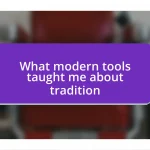Key takeaways:
- Customer feedback provides invaluable insights, revealing user experiences and improving product development.
- Effective collection methods, such as surveys and user testing, enhance understanding of user needs and foster engagement.
- Continuous improvement from feedback transforms products and maintains user connections, driving meaningful enhancements.

Understanding customer feedback importance
Customer feedback is like a treasure map, guiding us toward understanding what our clients truly value. I remember a specific instance when we received a detailed response about a feature that seemed seamless to us, but was actually causing confusion for users. This feedback was a wake-up call; it brought to light the importance of seeing things from our customers’ perspectives.
Diving deeper into customer feedback often reveals recurring themes that we might overlook. For example, after implementing an adjustment based on one customer’s suggestion, I was astonished to see how many others echoed their sentiment. Have you ever felt that thrill of realizing a small change made a big impact? It’s moments like these that emphasize the true value of listening.
It’s easy to write off feedback as just complaints or simple opinions, but I’ve learned that every response is an opportunity for growth. One time, a user shared how a frustrating experience with our software derailed their entire day. It hit me—customer feedback is not just data; it’s a glimpse into their lives, highlighting how our product affects them directly. Shouldn’t we treat that kind of insight with the utmost respect?

Collecting customer feedback effectively
Collecting customer feedback effectively requires both strategy and empathy. I’ve found that genuinely engaging with customers fosters a better flow of information. On one occasion, I set up a casual video call with a small group of users to hear their thoughts directly. The intimate setting allowed for open, honest dialogue, and I was amazed at how many insights came pouring in. It was like peeling back layers to reveal the core challenges they faced.
To gather valuable feedback, consider these approaches:
- Surveys: Tailor questions to extract specific information about features or experiences.
- Open-Ended Questions: Encourage users to share their thoughts freely. You’ll be surprised by the depth of insights.
- User Testing Sessions: Observing users interact with your product can unveil real-time frustrations.
- Feedback Forums: Create an online space where users can discuss and share their experiences.
- Incentives: Offering small rewards for feedback can increase participation without compromising authenticity.
This diverse array of methods has helped me connect more deeply with users and gain clarity on their needs.

Analyzing customer feedback for insights
Analyzing customer feedback for insights is like uncovering a series of interconnected stories. When I first started sifting through user comments, it felt overwhelming. But by categorizing feedback into themes, I suddenly saw patterns emerge. For instance, several users mentioned that a particular feature was “hard to find.” By aggregating their voices, I realized we needed to improve visibility—something that seemed minor to us but was pivotal for users.
In another instance, I noticed an unexpected spike in mentions of a “slow loading time.” Initially, I dismissed it, thinking it was just a temporary issue. However, upon examining the reports more closely, I discovered that this was quite a significant concern for a subset of our users. Addressing it led to a more seamless experience overall, and let me tell you; seeing users’ relief in subsequent feedback was incredibly gratifying.
The beauty of analyzing this feedback lies in the connections one can make. I once had a user message me, sharing a heartfelt story about how our product helped them organize their life. This feedback sparked a broader discussion within our team about enhancing those features further. It drove home the point that data is not just numbers; it’s human experiences waiting to be understood.
| Key Points | Insights |
|---|---|
| Theme Recognition | Identifying trends in feedback helps pinpoint specific areas for improvement. |
| Aggregated Feedback | Seeing collective user concerns can reveal larger issues that need addressing. |
| Understanding User Emotions | Real stories behind feedback inspire product enhancements and deeper connections with users. |

Implementing feedback into QA processes
Integrating customer feedback into QA processes can transform the way we develop products. I recall a project where we received consistent feedback that our onboarding process was confusing. Instead of brushing it off, we hosted a series of brainstorming sessions focused solely on this concern. The result? A revamped onboarding experience that not only clarified user steps but also significantly reduced support tickets. It was rewarding to witness how a few voices could bring about such substantial change.
Often, I find myself wondering how to prioritize feedback effectively. In a case where multiple users flagged issues related to usability, we decided to implement a pilot program for a select group of them. This hands-on approach allowed us to test changes in real time. The spontaneous feedback from these users shaped our final rollout, affirming the importance of collaboration. I’ve learned that when QA processes encompass direct user involvement, the end product aligns more closely with what users truly need.
Sometimes, the process of implementing feedback feels daunting, but I remind myself that every comment is a potential roadmap to improvement. During one feedback session, a user expressed frustration about a feature that didn’t work as expected during peak times. This moment led to critical discussions about our testing scenarios. We realized that we needed to simulate real-world conditions more rigorously. It’s moments like these that reinforce my belief: customer feedback isn’t just data; it’s a gateway to an enhanced user experience.

Measuring impact of changes
Measuring the impact of changes requires a careful examination of before-and-after feedback. I remember when we rolled out a new feature that promised quicker searches. Initially, I wasn’t sure how to gauge its success. But, when I analyzed user feedback afterward, I was thrilled to see a significant decrease in comments about “frustrating search times.” It was comforting to know that our efforts resonated with users.
In another instance, I encountered feedback regarding a new design layout that clashed with existing workflows. At first glance, the changes looked beautiful on paper. But as I dug into user reactions, I found that many felt disoriented and overwhelmed. This taught me that aesthetic changes should always be backed by user familiarity. Knowing that the user experience stems from emotional connections is vital—it’s not just about making things look good; it’s about making users feel good using them.
Furthermore, tracking user engagement metrics helped us quantify the changes we made. I distinctly remember the day I compared feedback with analytics after a major update. The stats showed a strong uptick in user activity, aligned with positive comments about the new features. It was a lightbulb moment for me. It reinforced the idea that when we listen closely and respond thoughtfully, we not only meet user expectations but often exceed them. How rewarding is that?

Continuously improving from feedback
Embracing feedback is a journey, not just a destination. After launching a major update, I received a heartfelt message from a long-time user expressing their gratitude for the changes, but they pointed out a minor glitch that still caused some frustration. Instead of viewing this as a setback, I was invigorated; it highlighted a clear path for further refinement. This user-centric approach kept me grounded, reminding me that even the smallest pieces of feedback could lead to meaningful improvements in the user experience.
Moreover, I recall a time when a user suggested adding a simple tooltip to a feature that many were struggling to understand. Initially, it seemed like a small enhancement, but implementing that change transformed user interactions dramatically. It’s incredible to witness how an attentive ear can bridge knowledge gaps; it made me ask myself: What else are we missing that could make a larger impact? It’s in these moments of realization that I find true motivation to dig deeper into feedback and explore what’s possible.
I often engage in informal chats with users to better understand their experience. One remarkable interaction unfolded when a user candidly shared how a particular feature saved them time in their daily routine. Hearing the genuine appreciation in their voice was more powerful than any metric I could analyze. It drove home the point that continuous improvement isn’t just about the numbers; it’s about fostering connections and refining how users interact with our product. After all, isn’t it the user’s journey that ultimately shapes our success?














